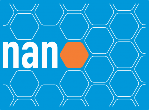Banca de QUALIFICAÇÃO: PAULO HENRIQUE CAMANI
Uma banca de QUALIFICAÇÃO de DOUTORADO foi cadastrada pelo programa.STUDENT : PAULO HENRIQUE CAMANI
DATE: 27/02/2023
TIME: 09:00
LOCAL: Câmpus Santo André
TITLE:
STARCH AEROGELS CONTAINING MODIFIED NANOCELLULOSE FOR REMOVAL OF HEAVY METALS IN WASTEWATER FROM THE INDUSTRIAL SECTOR
PAGES: 210
BIG AREA: Outra
AREA: Multidisciplinar
SUMMARY:
Contamination of water resources by potentially toxic elements/heavy metals has generated a growing and constant concern in contemporary society. Bivalent metal ions such as cadmium, zinc, copper, and manganese are some of these contaminants due to their persistence, bioaccumulation, and high toxicity. Therefore, adsorbent materials such as aerogels have been developed and applied to mitigate this problem due to their high surface area, low density, and versatility of precursor materials. From this objective, this doctoral thesis investigates the use of corn starch aerogels containing cellulose nanostructures modified with a chelating agent to remove divalent metal ions from industrial wastewater. Nanocellulose was obtained by microwave-assisted pretreatments and combinatorial mechanical isolation consisting of homogenization at high shear rates and high-intensity ultrasonication. Its average particle size reached 581 nm, with 77% crystallinity and 80% weight yield. In turn, the corn starch aerogel was synthesized by crosslinking through the formation of trisodium citrate, followed by drying by lyophilization, in which the intermediate concentration (1:1.5 ratio of starch: crosslinking agent) obtained a lower apparent density, low shrinkage rate, high surface area, satisfactory mechanical performance, and a 30% divalent cadmium removal efficiency, having no divalent zinc removal. This cadmium removal was likely due to the ionic exchange of Na+ ions of the crosslinking agent with cadmium, the action of starch hydroxyls, and the high surface area. The nanocellulose aerogel, obtained by dispersion in NaOH/urea solution, followed by crosslinking with epichlorohydrin and drying by lyophilization, achieved low density, high porosity, reasonable shrinkage rate and high mechanical strength. As for the removal of cadmium and zinc, cadmium obtained a removal efficiency of 99% and reached a lower efficiency for zinc of approximately 20%. Finally, the composite starch aerogel containing cellulose nanostructures dispersed in NaOH/urea solution, crosslinked by trisodium citrate and dried by lyophilization obtained an increase in apparent density, lower shrinkage rate, high mechanical resistance, and satisfactory removal of ions bivalent cadmium and zinc. Therefore, the synergistic effect between the cellulose nanostructures and the highly porous structure of the starch aerogel promoted the removal of cadmium and zinc ions, keeping the structure light, resistant and eco-friendly.
COMMITTEE MEMBERS:
Presidente - Interno ao Programa - 1760410 - JEVERSON TEODORO ARANTES JUNIOR
Membro Titular - Examinador(a) Interno ao Programa - 1768959 - FERNANDO CARLOS GIACOMELLI
Membro Titular - Examinador(a) Externo ao Programa - 1814655 - LUCIA HELENA GOMES COELHO
Membro Titular - Examinador(a) Externo à Instituição - ALEXANDRE TADEU PAULINO - UDESC
Membro Suplente - Examinador(a) Externo ao Programa - 064.602.669-05 - Pedro Henrique Santos - UFSC
Membro Suplente - Examinador(a) Externo ao Programa - 1933328 - HELOISA FRANCA MALTEZ
Membro Suplente - Examinador(a) Externo ao Programa - 2604737 - EVERALDO CARLOS VENANCIO




